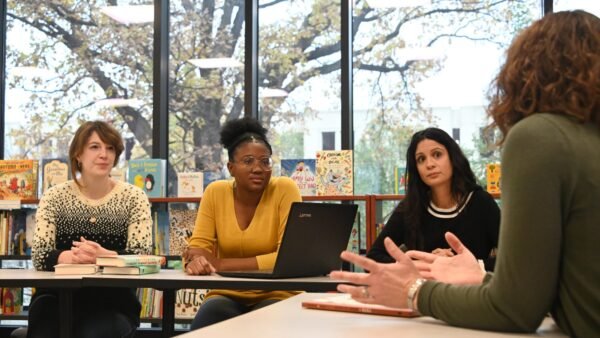
From Planning to Performance: Eight Steps for Inclusive Presentation Delivery

A varied work environment requires presentations that everyone can enjoy and learn from. This article presents eight practical ways for making presentations more inclusive. The lessons are brought to you by the Presentation Experts, a presentation design service, and these lessons will teach you how to build engaging presentations for all audiences, regardless of their background, abilities, or learning styles.
These inclusive habits can really help you improve your communication skills and create a respectful, inclusive atmosphere.
Understand your audience.
To provide an inclusive presentation, first understand your audience. It comes without saying, right? Anyways, this understanding of the audience requires investigating your target audience’s age, culture, career, and any limitations. Understanding these elements enables you to personalize your presentation to meet their individual needs and experiences.
Audience Demographics Research.
Begin with audience demographics. This may be performed by using pre-event surveys, registration information, or informal encounters. For example, you can run a diversity and inclusion survey that will give you nuanced insights into your audience’s unique circumstances, demographics, and experiences.
Gaining this kind of knowledge about your audience is sure to be invaluable when it comes to tailoring your presentation to their preferences.
Customizing Content to Meet Different Needs.
Tailor your content to your target audience’s demographics. Use inclusive language and avoid technical jargon unless everyone knows it. Consider your target audience’s cultural and educational backgrounds to avoid alienating them via content or delivery.
Knowing your audience enables you to provide a more informed and engaging presentation. This first step establishes the presence of your presenting style.
Content Planning.
A presentation that is both accessible and entertaining to all audience members requires careful content creation. This approach entails organizing your presentation to achieve clarity, impact, and accessibility.
Presentation Structure: Clarity and Impact.
Your material should be rationally ordered and built upon existing knowledge. Begin with an introduction that sets the tone, then provide the important facts, and finish with a summary that highlights the key points. This clear foundation simplifies things for all audience members, especially those who need more time to learn.
Making content accessible.
Making your information accessible goes beyond words. Speak plainly and simply to individuals with diverse backgrounds and skill levels. Summarize complicated concepts and provide handouts or visual aids to supplement the spoken information. Make your papers screen reader accessible and provide various formats for visually challenged audience members.
Planning your content around these features can make your presentation more inclusive and maximize the event’s advantages for everyone.
Making Slides Accessible.
The visual style of presentation slides determines their accessibility and efficacy. Learn how to make presentations that everyone can comprehend.
Visually Accessible Slide Design Tips:
To help visually challenged folks, use high contrast text and backdrop colours. Black text on white, or vice versa, is simple to see.
Simple Designs: Avoid layouts that are distracting or confusing. Use white space around text and pictures in a tidy way.
Use big letters for easier reading from a distance. Headings should have a larger font size than body text, which should be 24 points.
Selecting fonts and colours
Colour schemes: When choosing slide colours, keep colour blindness in mind. Avoid hazardous colour pairings like green and red.
Choose readable fonts. Sans-serif types like Arial and Helvetica are ideal for screen readability.
These features allow you to design presentations that are attractive and accessible to everyone in your audience, even those who have visual impairments.
Inclusive Language and Delivery
Using inclusive language and careful delivery makes everyone in the audience feel valued and involved. How to do this in presentations.
Language Matters in Inclusivity
Avoid jargon: Use clear, straightforward language that all audience members may comprehend. Avoid utilizing technical or industry-specific jargon unless it is explicitly explained or clarified in the presentation.
Use Gender-Neutral Language: To neutralize gender-specific phrases, use “they” instead of “he/she” and “team” instead of “guys”.
Cultural awareness: Cultural variations might affect how your message is perceived. Avoid using idioms and words that may lose significance between cultures.
Clear and Respectful Communication Methods
Clear, Moderate Speech: Maintain a moderate speaking tempo so that everyone can grasp the information, particularly those who process auditory information slowly.
Pause to emphasise: After making crucial statements, pause momentarily to ensure that your audience understands them. This increases understanding and accentuates the point.
Restate To help you remember crucial points, repeat them throughout the lecture.
Inclusive language and thoughtful delivery improve the accessibility of your presentation and make attendees feel appreciated.
Using various learning styles.
Recognizing and engaging audiences’ learning styles improves presentation inclusiveness and effectiveness. How to Support Multiple Learning Styles:
Identifying Audience’s Learning Styles
Visual learners learn best via observation. Support your ideas using diagrams, infographics, and videos.
Auditory learners like hearing. Maintain clear verbal communication and use conversations or recordings wherever feasible.
Kinesthetic learners gain information via hands-on experiences. While it may be challenging in a typical presenting format, include audience participation activities or demonstrations.
Engaging Everyone with Your Delivery
Use a range of teaching strategies in your presentation to suit various learning styles. Use imagery, narrative, and interaction.
Polls, question periods, and small group discussions make presentations more appealing to interested students.
Notes and takeaways: Provide attendees with specific handouts for use during and after the presentation. This allows all students to study and review at their own speed.
Accepting these many learning styles can help your presentation be more inclusive, memorable, and powerful for everyone.
Answering Questions Inclusively…
Facilitating an inclusive Q&A session engages audience members while making them feel heard and appreciated. Here are some tips for making your Q&A sessions more inclusive:
Tips for Inclusive Q&A
Set Clear Guidelines: At the start of the Q&A session, establish clear expectations for question handling. To encourage involvement, ask polite, concise questions.
Ask questions utilizing an audience microphone if one is provided. This elevates their voice and ensures that the whole audience hears the query.
Always repeat the audience’s questions before responding. If some people did not hear the question, this will help them to comprehend it.
Encourage all attendees to participate.
Encourage questions from the whole crowd. This fosters engagement from players who are not as confident or remote.
Provide other questioning methods: Throughout the session, attendees may submit written or digital inquiries. Shy people or those who dread public speaking may benefit from this.
These ideas will improve the effectiveness and inclusivity of your Q&A sessions by enabling everyone to participate.
Use assistive technology.
Assistive technology may help make presentations more accessible, enabling everyone to participate. Integrate these technologies effectively.
Presentation: Overview of Assistive Technology
Hearing loops and FM systems help the hearing impaired. Before you deliver your presentation, check sure these gadgets work.
Visual Aids: Screen magnifiers and text-to-speech software may assist visually challenged users in understanding your presentations and material.
Real-time captioning may be particularly useful for persons who are deaf or hard of hearing, as well as those who learn best by reading.
Implementing These Technologies Effectively.
Test these technologies prior to the presentation to eliminate technical difficulties that may affect accessibility.
Training and awareness: Learn how to utilize these tools and help attendees as necessary.
Signs and Directions: Provide clear signs and instructions for utilizing assistive technology at your event. All guests are aware of the resources available and how to utilize them.
The use of assistive technology in your presentation may dramatically increase its inclusiveness and accessibility, enabling all audience members to fully participate with your material.
Feedback Collection and Use:
Continuous progress demands feedback, especially for inclusive presentations. Discover how to gather and use feedback to make future presentations more interesting and accessible.
Important Feedback for Inclusive Presentations
Collect audience comments to assess the accessibility of your presentation. This information helps to identify areas for growth and reinforces accomplishments.
Methods for obtaining and applying feedback
Use post-presentation surveys or online polls to get audience feedback. To learn more, ask specific questions regarding your presentation’s inclusion and accessibility.
Extended comments: Following the event, invite attendees to offer feedback via email or a feedback form. This enables them to think more deeply and provide more insightful responses.
Act on comments: Carefully review comments to find reoccurring themes or issues. This information may help you improve your content, presentation, and assistive technology.
A robust feedback system enables you to better understand the demands of your audience while also demonstrating a commitment to diversity and advancement.
Conclusion
In today’s globalised society, presentations must reach and engage a wide range of audiences. This article’s phases, which range from audience knowledge and content production to assistive technology usage and feedback, provide a thorough approach to inclusive presentations. Presenters may utilize these techniques to make their message more accessible, resulting in a welcoming and polite environment. In order to accomplish ongoing progress and flexibility, input must be solicited and absorbed. Take the following measures to enhance your presenting abilities and promote inclusion in your professional community.













































